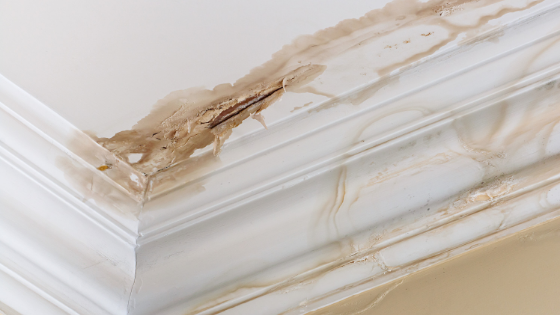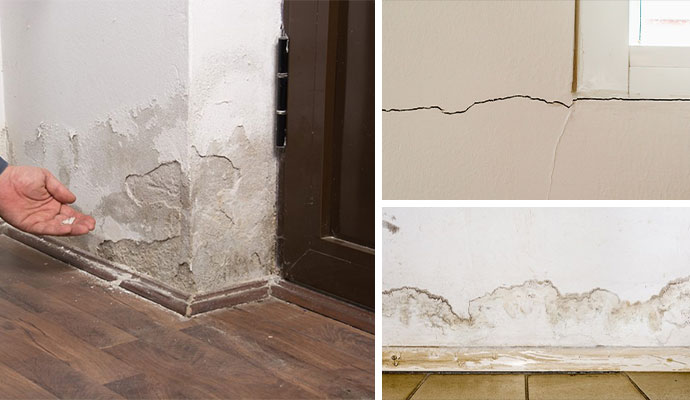In this article below you will find a lot of good ideas when it comes to How to Find and Repair Water Leaking in the Wall.

Water stains on wall surfaces are not pleasurable to the eyes. Often it appears virtually unpreventable to experience water spots on wall surfaces in houses.
House owners residing in damp areas frequently handle the anxiety of water stains on walls. Yet that does not have to be the case for you. With precise as well as all-round info on the root causes of water spots and also punctual repair work processes, you will constantly be a step ahead of such incidents. So, this post promises to be a valuable guide for you.
3 Usual Root Causes Of Water Spots on Walls
Unlike popular belief, water discolorations on wall surfaces do not constantly stem from bad building products. There are numerous causes of water discolorations on walls. These include:
Poor Drainage
This will certainly protect against water from permeating into the wall surfaces. This links to extreme dampness that you notice on the walls of your building.
The leading cause of damp wall surfaces, in this case, can be an inadequate drainage system. It can likewise be due to bad monitoring of sewer pipes that run through the building.
Damp
When hot wet air meets completely dry cold air, it causes water droplets to base on the wall surfaces of structures. When there is heavy steam from food preparation or showers, this takes place in washrooms and also kitchens. The water droplets can tarnish the surrounding walls in these parts of your home and also spread to other areas.
Damp or condensation affects the roof covering and also walls of buildings. This creates them to show up darker than various other locations of the house. When the wall surface is wet, it produces an ideal atmosphere for the development of microorganisms as well as fungi. These might have adverse results on health, such as allergic reactions and respiratory system problems.
Pipe Leaks
Most houses have a network of pipes within the wall surfaces. This ensures that the pipelines are faraway from the reach of damaging rats. It constantly increases the practicality of such pipes, as there is little oxygen within the wall surfaces. This prevents rust.
A downside to this is that water leakage affects the wall surfaces of the building and also triggers extensive damage. A telltale sign of malfunctioning pipelines is the appearance of a water stain on the wall surface.
Water Spots on Wall Surface: Repair Service Tips
Homeowners would usually want a quick fix when handling water discolorations. They would soon realize this is detrimental as the water discolorations persist. Here are a couple of valuable suggestions that will certainly direct you in the fixing of water stains on wall surfaces:
- Always repair the source of water discolorations on walls
- Engage the help of expert fixing solutions
- Method regular cleanliness and clean out stopped up sewage systems
- When constructing a home in a water logged location, ensure that the workers carry out appropriate grading
- Tiling locations that are prone to high condensation, such as the bathroom and kitchen, aids in reducing the build-up of damp
- Dehumidifiers are additionally helpful in keeping the dampness levels at bay
Pro Pointer
A houseplant in your home likewise boosts its humidity. So, if the house is currently humid, you might want to introduce houseplants with minimal transpiration. An example of appropriate houseplants is succulents.
Final thought
Although no one wishes to have water stains on walls in their home, it can happen to the very best of us. This write-up offers you leverage, as you currently understand exactly how to handle this accident if it does take place.
It is constantly best to recruit expert solutions to aid repair the problems in your house.
Often it seems virtually unavoidable to experience water stains on wall surfaces in houses.
Contrary to preferred belief, water stains on wall surfaces do not constantly stem from bad structure products. There are a number of reasons of water spots on walls. The water droplets can tarnish the bordering wall surfaces in these components of your residence and also spread to various other locations.
Right here are a couple of helpful pointers that will lead you in the repair of water stains on walls:
CHECKING FOR WATER DAMAGE
Water damage can be costly, and it may begin before you even notice the first signs of trouble. Water damage can cause mold and mildew in your walls and floors, which can create an abundance of health concerns for your family. It can also lead to costly repairs of various appliances and general home fixtures. To avoid the pricey consequences of water damage, here are Warner Service’s top 5 places you should check:
- The walls – The easiest place to spot the beginnings of water damage is on the walls and ceilings of your home. If water damage is present, there will most likely be water stains, especially around the windows and doorframes, and/or cracks in the drywall. If a stain looks unusual (discolored to brown, black or gray, raised texture), has a swollen appearance or is soft to the touch, contact a professional immediately.
- The pipes – To avoid water damage, consistently check the pipes in your kitchen (especially the dishwasher and ice maker), bathrooms, laundry room (specifically washing machines) and basement for corrosion, leaks and water stains. Pay special attention to where the pipes connect in your home and the location of caulking around the bathroom fixtures, including toilets, sinks, showers and tubs. Missing or loose caulking and grout could be signs of leaking water. This seepage can also quickly cause mold and rust, so double check your water heater and tank for wet spots on the floor.
- The floor – Water damage is very easy to spot on the floor. Look for any warping or buckling of the material, especially in the basement. If your home has wood flooring, look for bright white or dark stains. If your home has carpeting, keep it dry and clean. A damp carpet that smells of mold could cause water damage and health problems. To avoid this, consider installing floor pans under your appliances to help prevent damages from small, slow and undetected leaks.
- The basement and attic – If your basement or attic smells odd check for mold and mildew around the area, especially the valley where the roof meets. While you are inspecting those areas, check for wall cracks, floor stains, rust and dampness in the insulation. If you live in a colder and/or rainier climate, perform routine checks for water damage from melting snow or ice and rain.
- The exterior – Check the roof for damaged flashing and missing, cracked or curled shingles. There should also be no standing water anywhere outside your home. This could be caused by puddles, leaky rain gutters or hoses, poor drainage, or short gutter spouts. Invest in a sump pump system or water flow monitoring system, and perform routine maintenance on these outdoor appliances to avoid indoor water damage.

As a serious reader about Indicators of Water Damage Behind Walls, I was thinking sharing that blog post was a great idea. Sharing is caring. Who knows, you might be doing someone a favor. We truly appreciate reading our article about Indicators of Water Damage Behind Walls.
Quick, reliable, call!
Comments on “Spot and Address a Stain from Water on Walls: Step-by-step Tutorial”